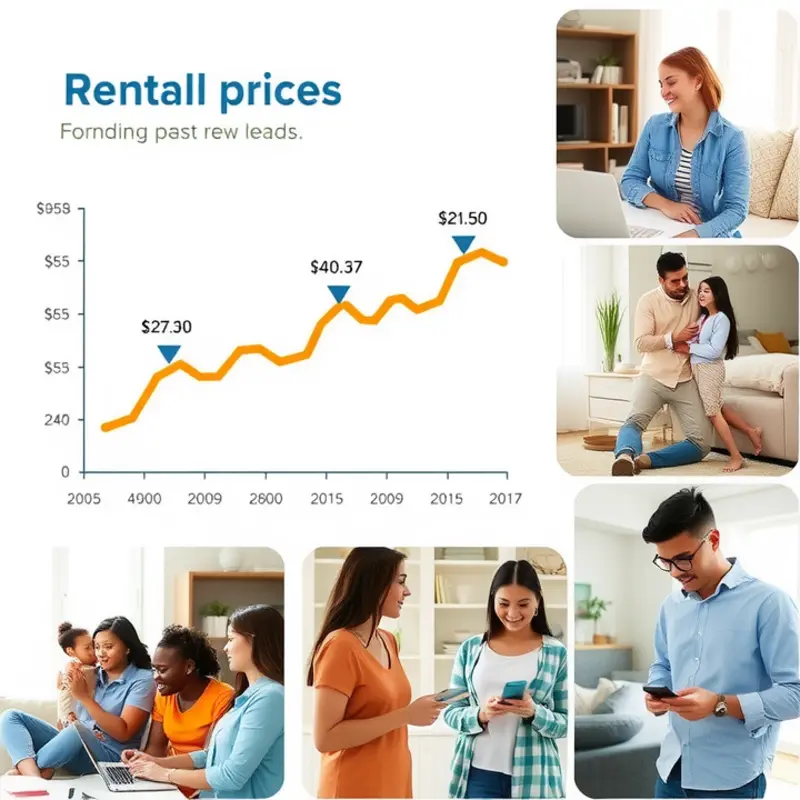Renting your first home or apartment can be an overwhelming experience, especially when trying to understand what affects rent prices. It’s crucial for young professionals, first-time renters, students, couples, and families to gain clarity on this topic. By understanding the factors that contribute to rent prices, such as location, amenities, and market trends, you can make informed decisions that align with your financial goals. Whether you’re seeking a cozy studio or a three-bedroom family home, this guide will provide insight into the key elements influencing rental costs, helping you navigate the leasing process with confidence and peace of mind. Let’s break down the essential factors so you can feel empowered and prepared to find the best place to call home.
Location: The Heart of Rent Prices

Location is a major determinant of how much you’ll pay for rent. Urban areas tend to have higher rents due to demand and proximity to amenities. In contrast, suburban areas might offer more space at a lower cost, but often with fewer amenities or longer commutes.
Proximity to public transportation is a significant factor. Living near a subway station or major bus line can influence rent prices significantly. The convenience of easy travel without a car often comes with a price premium. Renters in these locations enjoy shorter commutes and flexibility, compensating for higher rent.
Schools significantly influence neighborhood desirability and, consequently, rental prices. Areas with top-rated schools are in high demand among families, pushing rents up due to competitive demand. Renters without children should weigh this factor based on their needs, as they might find more affordable options in areas with average-rated schools.
Access to amenities like parks, shopping centers, and restaurants also affects rental pricing. Neighborhoods bursting with conveniences and entertainment options attract renters willing to pay more for lifestyle benefits. However, if you prefer a quieter lifestyle, areas further from these hubs might offer more affordable rent.
A neighborhood’s demand level plays a crucial role in rental pricing. Highly sought-after neighborhoods, with vibrant culture or historical significance, command higher rents. For budget-conscious renters, exploring emerging areas or less trendy neighborhoods could lead to more favorable rental prices.
Safety rankings are another key consideration. Safer areas typically attract more renters and higher rental costs. Prospective renters should weigh the importance of neighborhood safety when considering their options. A safer neighborhood might be worth the extra cost compared to a more affordable option in a less secure area.
Understanding these location-related factors is vital for renters. It provides insight into why some areas may seem out of reach and reveals potential strategies for making informed rental decisions.
For more on navigating rental choices, exploring tips on negotiating rent effectively can be beneficial.
Market Trends and Rental Demand

Understanding the dynamics of the rental market is crucial for any young renter looking to make informed choices. The interplay between demand and supply, seasonal fluctuations, and economic factors can significantly influence rental prices over time.
One of the primary drivers of rental prices is the balance between supply and demand. Urban areas often exhibit higher demand due to their proximity to workplaces and amenities. When demand outpaces supply, rental prices tend to rise. Conversely, a surge in new housing developments can tip the balance, potentially stabilizing or reducing rent prices. Keeping an eye on local news about new construction projects can provide insights into future rental market trends.
Seasonal variations also play a role in rent fluctuations. Many renters prefer to move during the summer months, leading to increased demand and often higher prices. Rent prices might drop during the winter when fewer people move. For those flexible with their timing, considering a move in the off-peak seasons can lead to significant savings.
Economic factors, such as employment rates and inflation, further complicate the rental market equation. A strong local economy with robust job growth can raise rental demand as more people move to the area for work. On the other hand, economic downturns may lead to lower demand, giving renters more negotiating power. Understanding these macroeconomic indicators can help renters anticipate market shifts.
Moreover, as urban living becomes more expensive, renters explore alternative locations, contributing to the so-called “spillover” effect. Suburban areas or cities in close proximity to major metropolitan areas often see a rise in demand as renters seek more affordable options. This trend not only affects rent prices in those areas but also influences the amenities and lifestyle choices available.
Rent control policies can also impact supply and demand dynamics. In cities where rent control is in place, these regulations can limit rent increases for existing tenants, potentially reducing available rental inventory. However, understanding the specifics of local rent control policies, as detailed in this rent control explained article, can empower renters to navigate their choices more effectively.
Navigating the rental market requires awareness of these intertwined factors. Young renters should remain informed, adapt to market conditions, and exploit timing and trends to secure favorable rental terms.
Final words
Understanding what affects rent prices can ease the anxiety of first-time renters and young professionals. By recognizing the impact of location, market trends, and local amenities, you can make more informed choices that suit your needs and budget. Empower yourself with knowledge about these factors, as it can help you negotiate better and understand the true value of your prospective home. Remember, every rental decision is an investment in your future. Stay informed, and you’ll find that the rental process can be a much more positive experience.









